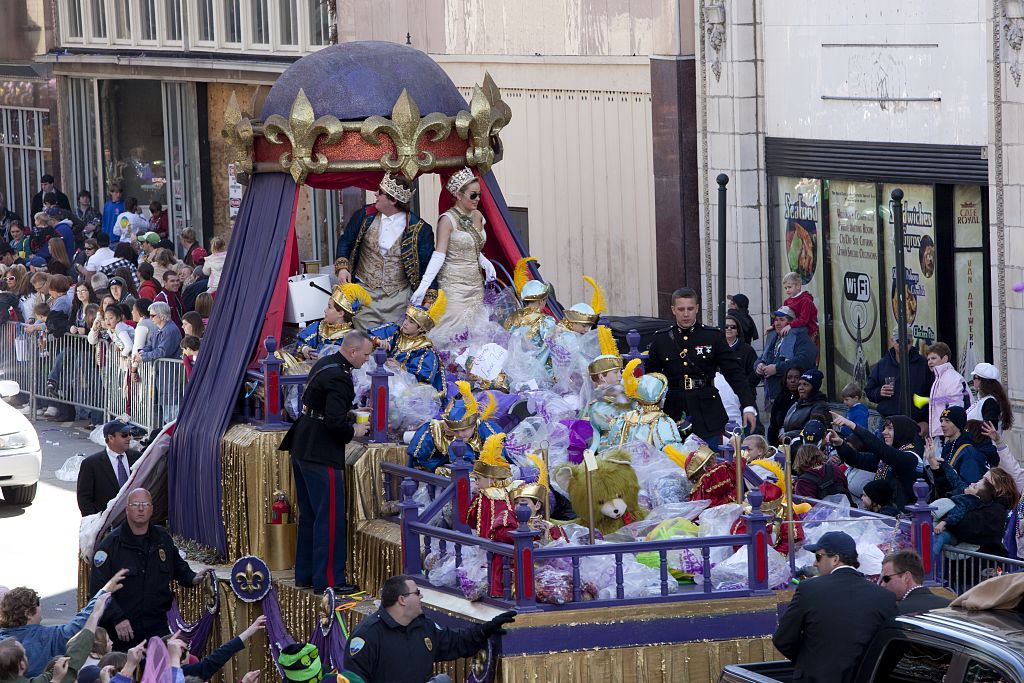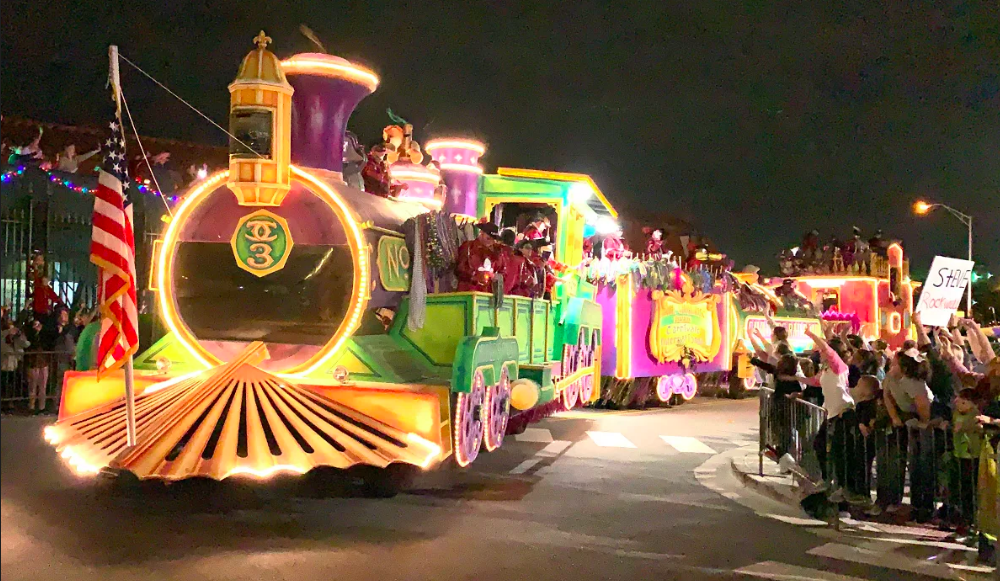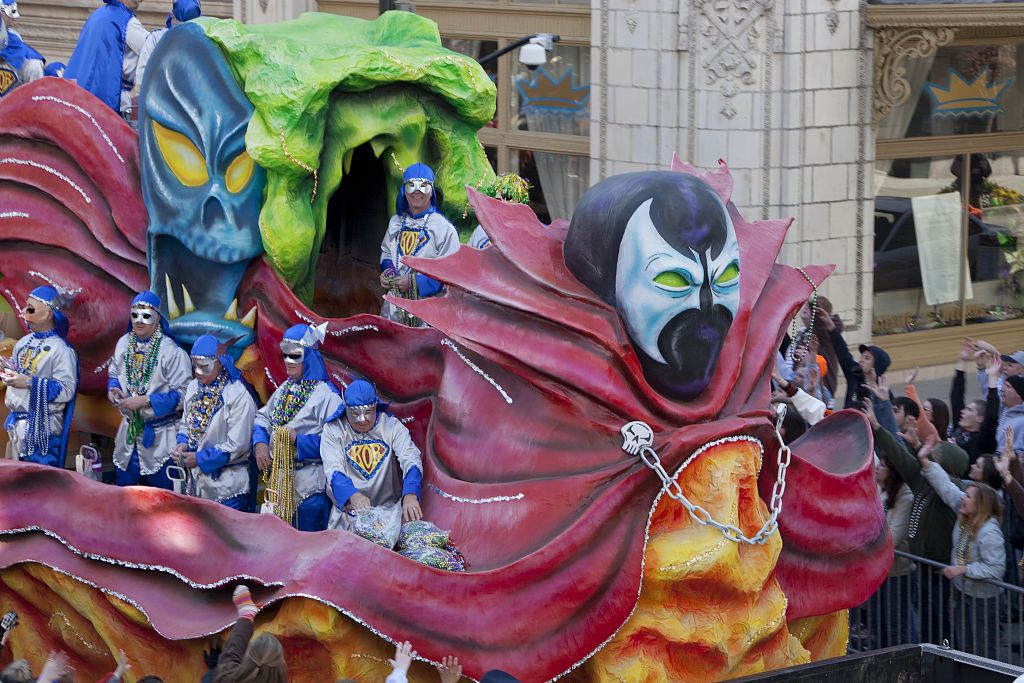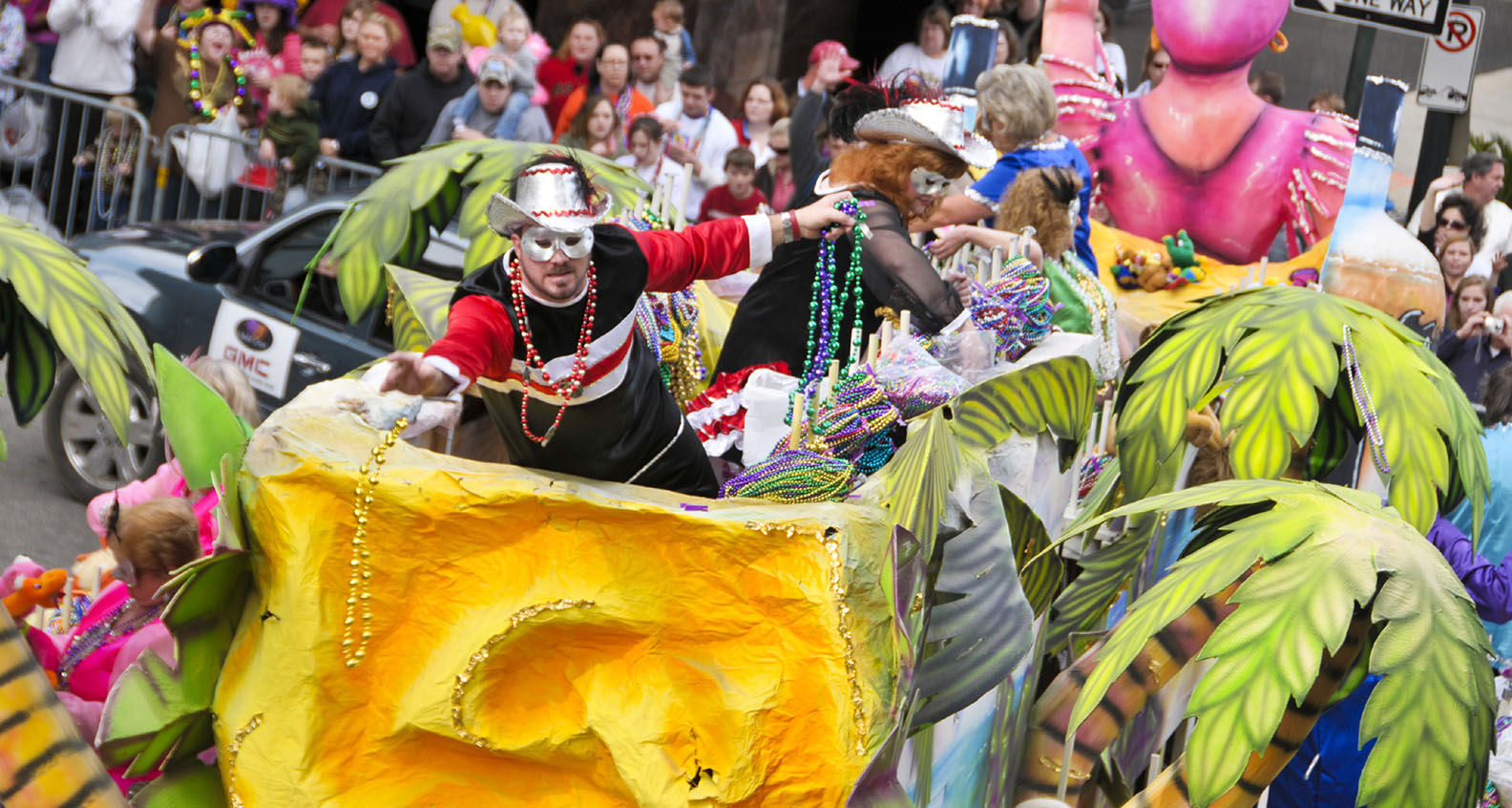Mobile's Mardi Gras Is Unique for One Special Reason
Mobile's Mardi Gras celebration is very unique for one very special reason; it was the first one in the United States.
While this fact is debated in several circles including those in New Orleans, the basic facts do not lie.
The French held a type of this celebration as early as 1703, and the city of New Orleans was not even founded until the year 1718.
If fact, according to their own early publications, these types of celebrations were very common in their city in the 1730’s, but also concede that the first Mardi Gras parade float did not glide through New Orleans until the year 1857.
What exactly is the Mardi Gras Celebration
 Mobile Mardi Gras Float
Mobile Mardi Gras FloatIn fully understanding the history of Mobile's Mardi Gras, it is very helpful to understand its very long history, and some of it is not pretty.
This unique celebration has a very long tradition, and dates back thousands of years to two very troubling pagan celebrations in ancient Rome, the festivals of Saturnalia and Lupercalia.
These two “celebrations” were based off of the spring season and fertility, and when the religion of Christianity arrived in this ancient city, the religious leaders at the time had a decision to make.
They could either abolish it altogether which they feared would cause backlash, or they could incorporate it into their new faith.
Because of this fact this celebration became the prelude to Lent; the 40 days of fasting and penance, between Ash Wednesday and Easter Sunday.
Shortly after this, the celebration spread to other European countries including England, Spain, Germany, and France.
The term “Mardi” is actually a French word for Tuesday, and the term “Gras” means fat, leading to the more common name given to this celebration and parade, “Fat Tuesday”.
By tradition, in the days that lead up to Lent, the partygoers will binge of food that is not only very rich but also very fatty in nature, in preparation for several weeks of eating only fish and other various ways of fasting.
The History of Mobile's Mardi Gras
 Train at the Mobile Mardi Gras
Train at the Mobile Mardi GrasThe history of Mobile's Mardi Gras is still very important to the Gulf Coast of Alabama and its rich culture, and it was first observed in the town when it was still as French colony, over a century before it was officially a state.
It came into this historic state by early French exploders, who were led by Pierre Le Moyne d’Iberville.
He recorded the very first observance in his journal in the year 1699, where the men that were in his camp had feasts, dancing, and a full night of revelry.
This festival observance continued in Mobile as the city passed through the control of France, the British, and finally the Spanish, until the Louisiana Purchase in 1803.
The first recorded occurrence of festive celebration in an American city was not actually held during the traditional per-Lent period.
Instead, it was held on New Year’s, when a businessman named Michael Kraftt and numerous friends held a spontaneous parade through the downtown area of the city.
However, there celebration was a bit different then it is today as they carried cowbells, rakes, and other common forms of farm equipment.
When the motive of this “parade” was questioned, Mr. Kraftt replied that they were the “Cowbellion de Rakin Society” that was simply celebrating the New Year.
The Cowbellion parade soon morphed into celebration we know today with costumes and masks, and in the year 1840, the parades started.
During the 1850’s the “Cowbellion Society” migrated to New Orleans, where they combined these celebrations.
However, this “society” would remain and ignite several others, which became known as “mystic societies”, because the people in them wished to remain secret.
In the year 1843 several men in the area that had been refused membership into the “Cowbellion Society” formed their own group, which became known as the “Strikers Independent Society” and remained active until the start of the Civil War.
The Civil War and Mobile's Mardi Gras
 Mobile Mardi Gras Float
Mobile Mardi Gras FloatThe onset of the Civil War brought an abrupt halt to Mobile's Mardi Gras, and in April of 1865, Union troops took compete control of this historic city.
However, the festivities suddenly and unexpectedly started again in 1866, when Joseph Stillwell Cain, a former member of the “Tea Drinkers Mystic Society”, led a parade through the occupied city.
In the parade, he dressed as a fictional Indian Chief, and officially declared as end to the city’s suffering, and as a result, started up the parades again for good.
He was also instrumental in moving this cherished tradition from New Year’s Eve, back to the traditional “Fat Tuesday”.
During the Reconstruction of the southern states, Mobile's Mardi Gras quickly became the city’s premier social event for the elites and was their way of celebrating the “Lost Cause”.
Before long, several new societies representing various different parts of the cities very diverse population begin to emerge.
One of the most popular was the OOM, known as the Order of the Myths, and was made famous for its signature “Folly” chasing “Death” around a broken column.
It was this image that was seen by several in the city as the true symbol of the “Lost Cause”.
At the end of this tradition in the parade, Death is finally defeated, and “Folly” wins out.
Shortly after this, several new “mystic’ societies were formed, and by the 1870’s, the Carnival season in the city started to become much more elaborate.
The numerous “mystic” societies began to sponsor private balls after the parades, as well as very elaborate themed plays.
These plays were called “Tableaux”, and in most all case were themed after that particular society’s parade float theme.
However, even with these events, the members of these “mystic” societies still remained private and secluded.
In the year 1871, a small group of businessmen as well as city boosters officially formed the Mobile Carnival Association, to organize as well as structure various events.
They also worked to serve as a link between the different societies, and this was the first attempt to help organize all of the public activities of the numerous groups involved.
Mobile's Mardi Gras Transition to Today
 The Moon Pie Tradition
The Moon Pie TraditionMobile's Mardi Gras transition to today has been slow, as in 1930, despite numerous inroads by minority groups, the vast majority of the working-class people were still spectators only.
In that year, a public masquerade ball at the city wharf on Dauphin Street was introduced, but the various “mystic societies” put a quick end to it.
However, the campaign to make this historic event more inclusive to people outside of these societies started to gain steam by a local author named Julian Lee Rayford.
He set out to honor Joe Cain for reviving this festival, and he immediately set up an event to transfer his body from a small cemetery to the much larger Church Street Graveyard, in the downtown part of the city.
Accompanied by a jazz-procession and mourners, the event was so popular, it has become perhaps one of the most attended of all of events of this festival.
Mobile's Mardi Gras today has many different meanings to different people in the city.
Some people see it as a way to boost the city’s economy, while others see it as a moral decline on the city.
However, whatever your view is, it continues to grow in size, cost, and duration.
What originally began as a one-day event before Lent with carefully scripted events followed by a day long parade separated by race, has slowly begin to change.
In the year 2003, the first and only racially mixed parading society was formed, the “Conde Explorers”.
This group was instrumental in racially mixed parading, and further separated Mobile from New Orleans, where several of the older “mystic societies” vowed to stop parading rather than comply with local ordinances.
Tensions are a lot less volatile today in Mobile, and several city officials describe this festival as the “civic safety-value”.
Mobile’s Mardi Gras is also considered must different than other cities, in that their floats are piled high with toys, candy, and their signature treat, Moon pies.
Thousands of residents from all around the state and the country come to this historic city annually to watch and partake in the various activities.
They are still sponsored by “mystic societies” and secret members, but that does not stop them from participating in one of the oldest traditions in the south.
References
http://www.encyclopediaofalabama.org/article/h-1437

Alabama Gift Store
Numerous Items for You and Your Family to Enjoy
See it here at the Gift Store
Copyright 2019-2023 Alabamabackroads.com
All Rights Reserved


















